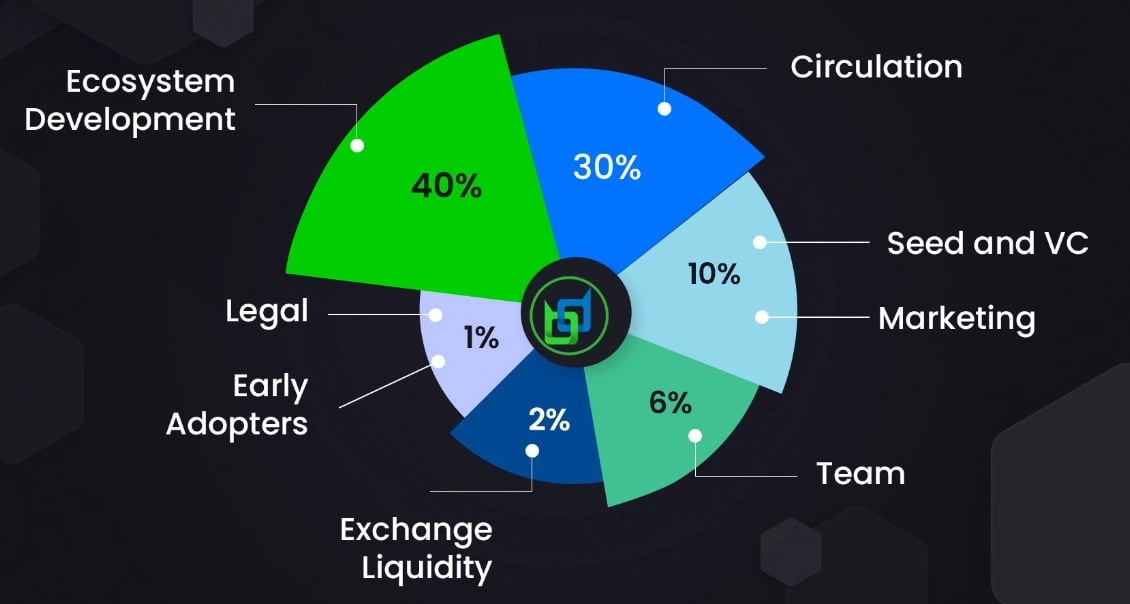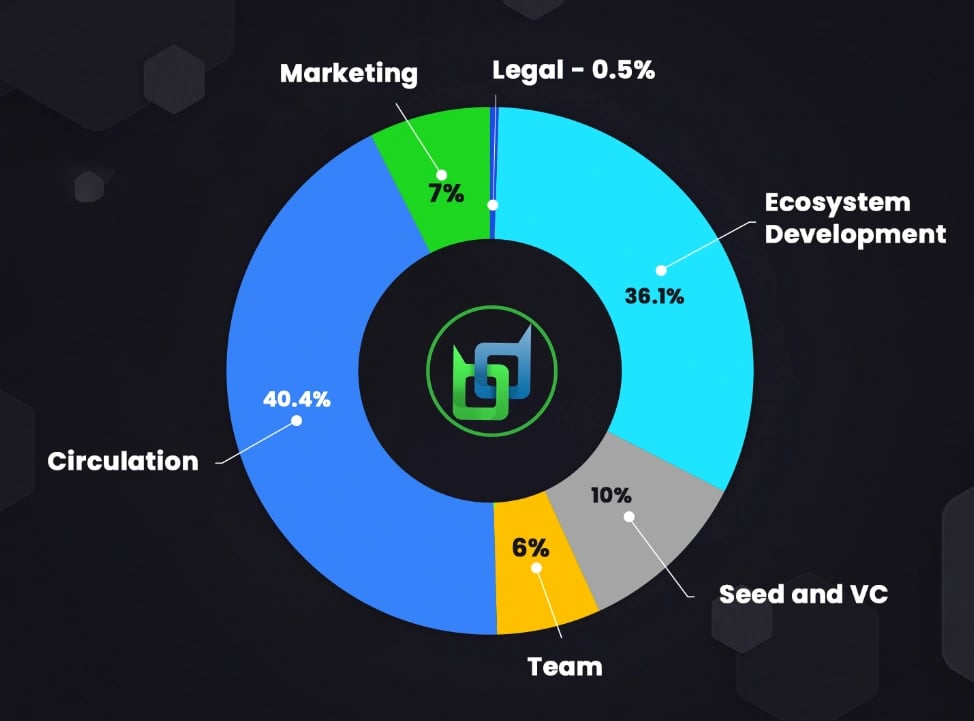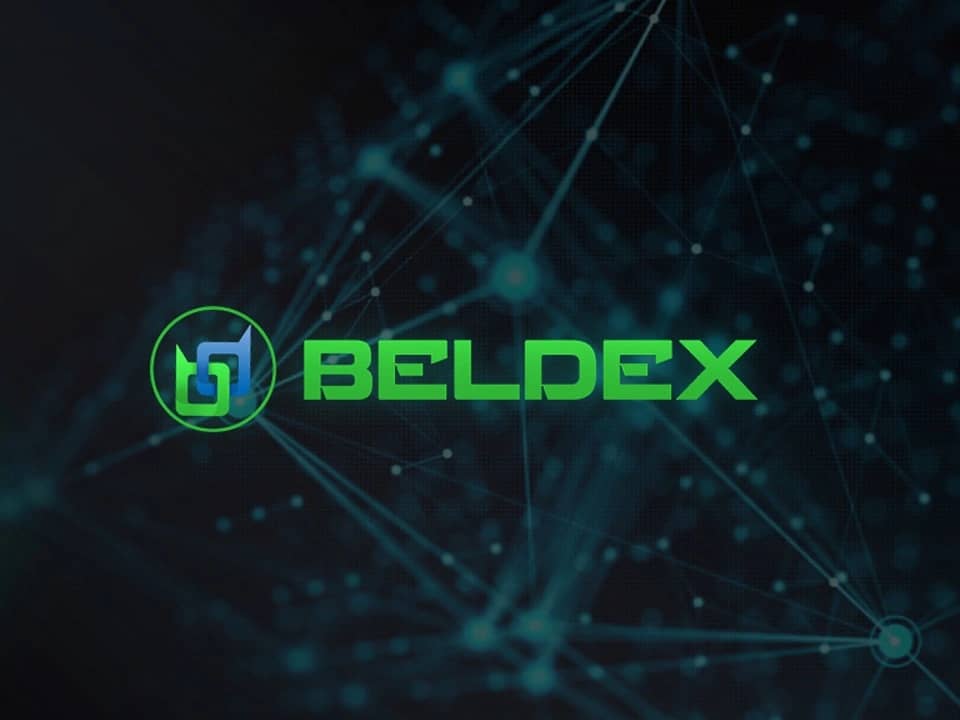Subscribe to wiki
Share wiki
Bookmark
Beldex
The Agent Tokenization Platform (ATP):Build autonomous agents with the Agent Development Kit (ADK)
Beldex
Beldex is a cryptocurrency exchange platform that emphasizes security and privacy, utilizing its native token, Beldex (BDX), to power various transactions. BDX allows holders to conduct both public and private transactions, offering flexibility in the traceability of their activities. [1][2]
Overview
The Beldex platform operates as a secure and privacy-focused cryptocurrency exchange, facilitating anonymous trading through the use of its native BDX token. The token, based on Monero, allows users to engage in peer-to-peer trading while maintaining privacy.
Beldex is a decentralized exchange (DEX), allowing users to trade cryptocurrencies in a decentralized manner without the need for an intermediary or central authority.[3]
Beldex offers a range of trading options, including spot trading, margin trading, futures market, and algorithmic trading. The platform also provides a Beldex wallet, currently available for Android, to manage digital assets.
Beldex aims to integrate BDX into retail and e-commerce, creating a broader utility for the token within a crypto ecosystem that seeks to eliminate intermediaries and enhance transactional freedom.[4][5][6][7]
BDX Token
The Beldex Token (BDX) is a coin that serves as the native token of the Beldex platform. It is designed to be easily integrated into the Beldex ecosystem. BDX aims to differentiate from other coins by focusing on privacy and security features; building on the features of Monero.[8][9][10]
Tokenomics
The total supply of BDX is 9.9 billion and is divided into eight categories, which are allocated to various wallets for specific purposes. The categories include ecosystem development, marketing, seed and venture capital allocation, legal operations, early adopter rewards, team allocation, and exchange liquidity. [15]
As of December 10th, 2021, the allocation to each category was the following: [15]

For each quarter, 130,680,000 BDX is released from these categories according to their vesting schedules and is used for various purposes. For example, in the first three quarters of 2022, a total of 392,040,000 BDX (3.9% of the total supply) was released from the ecosystem development fund for use in the development and expansion of Beldex's ecosystem. This new allocation (as of October 1st, 2022) is shown below as a percentage of the total supply. [15]

Beldex Proof of Stake
In the Beldex Proof of Stake (PoS) system, users can stake BDX on nodes in order to participate in the validation of blocks on the network. The more BDX a user stakes, the higher their chances of being selected to validate a block, and the lower the difficulty. The POS system on Beldex is based on delimited competition among nodes. [16]
In the POS consensus, every 30 seconds, a node is selected at random to produce a block, which is then sent to a quorum vote consisting of 11 other participating validator nodes. If at least 7 out of 11 validator nodes attest to the block's authenticity, it is broadcast to the network as a valid block. Then, a new quorum is formed and the process repeats. Beldex also provides pool staking via masternodes, where the hardware is shared among a few individuals who share the stake amount. [16]
Master Nodes
Beldex utilizes a network of Master Nodes which are paid in block rewards to propagate the blockchain and process transactions. Master Nodes require collateral of Beldex to be active, and this creates a built-in market-based Sybil resistance by forcing actors to incur a large cost in attempting any form of temporal analysis on the network.[11][12]
Block rewards
Block rewards are a type of incentive that are given to nodes or master nodes in a cryptocurrency network for validating and adding new blocks of transactions to the blockchain. When a node or master node creates a new block, it is rewarded with a certain number of BDX coins, which are emitted as a new block reward. Currently, the block reward is currently set to a constant value of 2 BDX. Of this block reward, 10% is awarded to the node that constructs the block, while 90% is awarded to a master node. The master nodes that are found to provide the best services to the network are moved to the front of the reward queue, while those that are penalized are moved to the end of the queue. [16]
Master node staking requirements
In the Beldex network, staking requirements are the collateral that an operator must hold in order to become a master node. This collateral is held in a time-locked output that can only be unlocked by the contributor upon request. If the contributor requests to unlock the funds, they will remain locked for an additional 15 days, during which the contributor will still receive rewards. The minimum amount is 10,000 BDX, but it may vary based on future emission. Inactive nodes will become deregistered and will need to stake the required amount of BDX for 30 days to become a master node again. [17]
B-Chat
B-Chat is an anonymous messaging application that uses BelNet, a decentralized Virtual Private Network (dVPN), to route messages. Launched on June 29th 2022, B-Chat contrasts traditional messaging apps that use end-to-end encryption to secure messages. With B-Chat, messages are routed to their destination through the shortest possible node distance while being encrypted at each hop. This ensures that messages are not stored on a centralized data center, which makes them less vulnerable to attacks and government intervention. Additionally, B-Chat uses Beldex Secure Masternodes to ensure that messages can be sent even when the receiver is offline. [16]
BelNet
BelNet is a private decentralized VPN that utilizes the Beldex Routing Protocol (BRP) to optimize communication between nodes and traverse traffic through the network with minimal load on the secure Masternodes. This is in contrast to traditional VPNs, which are typically managed by centralized systems. BelNet's Distributed Hash Table is maintained by Masternodes, which ensures that new nodes must meet certain bandwidth and staking requirements to join the network. Governance is maintained by randomly assigned governing nodes that verify incoming new nodes and penalize those that fail to meet bandwidth requirements. This ensures that the network remains decentralized and offers greater privacy compared to traditional VPNs. Additionally, BelNet supports a wide range of internet protocols and uses a packet switching routing model which allows for more efficient communication between nodes. [16]
Flash Transactions
Flash transactions are a feature of the Beldex blockchain that allows for faster confirmation of transactions. Unlike traditional blockchain transactions, which can take anywhere between 20-40 minutes to be confirmed, flash transactions only take a few seconds. This is achieved through a second layer architecture that is similar to Bitcoin's lightning network, where a shortest possible route is selected between flash channels and a channel path reducing algorithm is used to send the outputs to the receiver. [16][19]
Flash transactions are made possible through the use of Masternodes, which confirm a transaction's authenticity by securing the key images associated with the unspent transaction output (UTXOs). Masternodes store this key image and hold onto it until the transaction is added to a block on the Beldex network. If the key image is produced more than once, it signals a double spending attempt and the corresponding duplicate transaction is rejected. [16][19]
Similar to Ethereum, Flash transactions also enable a mechanism for competing transactions to pay a higher fee to be completed first. However, this process is several times faster and takes place outside the blockchain. Confirmation time on the blockchain is also significantly reduced due to the network's transition to a Proof-of-Stake (POS) consensus. [16][19]
Coin Burning
The Beldex coin burning mechanism is a method to control inflation and establish a stable market value. The network fees obtained from Flash transactions are burned, in order to achieve this. As Flash transactions are instant, they have a higher fee than regular transactions. These fees are burned immediately after the transaction is finished. The burning of the fees help to control inflation and provide sustainable price discovery in the market. [16]
Bucephalus Hard Fork
On November 30th, 2021, The Bucephalus hard fork upgrade went live. The hard fork transitioned the Beldex blockchain from a Proof of Work (PoW) to a more energy-efficient Proof of Stake (PoS) consensus algorithm. By transitioning to PoS, Beldex aims to improve the scalability and security of the network, as well as reduce its environmental impact. [18]
“This will make the Beldex network economical and reduce its carbon footprint." - CTO, Niyaz N.
The hard fork was projected to increase block creation speeds by 4 times, a 212.5% increase in rewards to master node operators and 37.5% of block rewards were to be allocated to governance - increasing the adaptability of the Beldex ecosystem and laying the foundation for the development of decentralized applications (DApps).
Team Members and Advisors
- Afanddy B. Hushni: Chairman
- Kim Beldex: Chief Executive Officer and Co-Founder
- Codeman-Crypto(cc): Chief Technology Officer
- Ziau: Chief Marketing Officer
- Sanada Yukimura: Blockchain Architect [14]**
Advisors
- Allard Dijk
- Dr. Mitchell Kraiwec-Thayer
- Dr. Dominique Schroder[13]
Partners
Exchange Partners
- Gate.io
- MEXC Global
- P2B
- HitBTC
- LetsExchange
- SimpleSwap
- StealthEX
- COINSBIT
- HOTBIT
- BuyUcoin
- Bilaxy [14]
Masternode Partners
- MNO
- MasternodeBuzz
- nodehub.io
- MYCOINTAINER
- PerfectNodes
- Pecunia Platform
- GETBLOCK [14]
Roadmap
2021 - POS has Launched
- Q1 - Wallets
- Q2 - Binance Smart Chain Bridge
- Q3 - POS Testing
- Q4 - BUCEPHALUS
2022 Ecosystem Development
- Wallet Release - Q1
- BCHAT Alpha Release - Q2
- Ecosystem Phase I - Q3
- Ecosystem Phase II - Q4
2023 EVM Integration
- Q1 - Ecosystem Phase III
- Q2 - Ecosystem Phase IV
- Q3 - EVM Integration Phase I
- Q4 - EVM Integration Phase II
Product Updates
In 2023, Beldex updated BChat and BelNet, focusing on improving usability, security, and network stability. New features were introduced, including group messaging in BChat and increased bandwidth for BelNet users. Additionally, in early 2024, Beldex launched a browser designed to enhance privacy by integrating BelNet, facilitating anonymous browsing with a focus on data protection. [20][21][22][1][23]
Tokenomics Adjustments
In early 2024, Beldex modified its token-burning mechanism in response to the increased demand for flash transactions. This adjustment was aimed at improving the stability of BDX's market value. Additionally, a portion of block rewards was redirected to a community governance fund, allowing BDX holders to participate in voting on network-related proposals. [24]
Ecosystem Expansion
Throughout 2023, Beldex expanded its ecosystem through partnerships with DeFi platforms and NFT projects, aimed at broadening the use cases for BDX within various digital environments. The platform also began collaborations with privacy service providers to further integrate BDX into decentralized VPN services and other privacy-focused applications. [25][26][27][28]
Roadmap Developments
By the close of 2023, Beldex completed the integration with the Ethereum Virtual Machine (EVM), enabling smart contract functionality on its network. This development supported the creation of decentralized applications (DApps) with a focus on privacy. For 2024, Beldex's roadmap outlines plans to expand its masternode network and enhance decentralized governance, along with additional product and infrastructure updates.[29][30][31][32][33]
See something wrong?
The Agent Tokenization Platform (ATP):Build autonomous agents with the Agent Development Kit (ADK)
